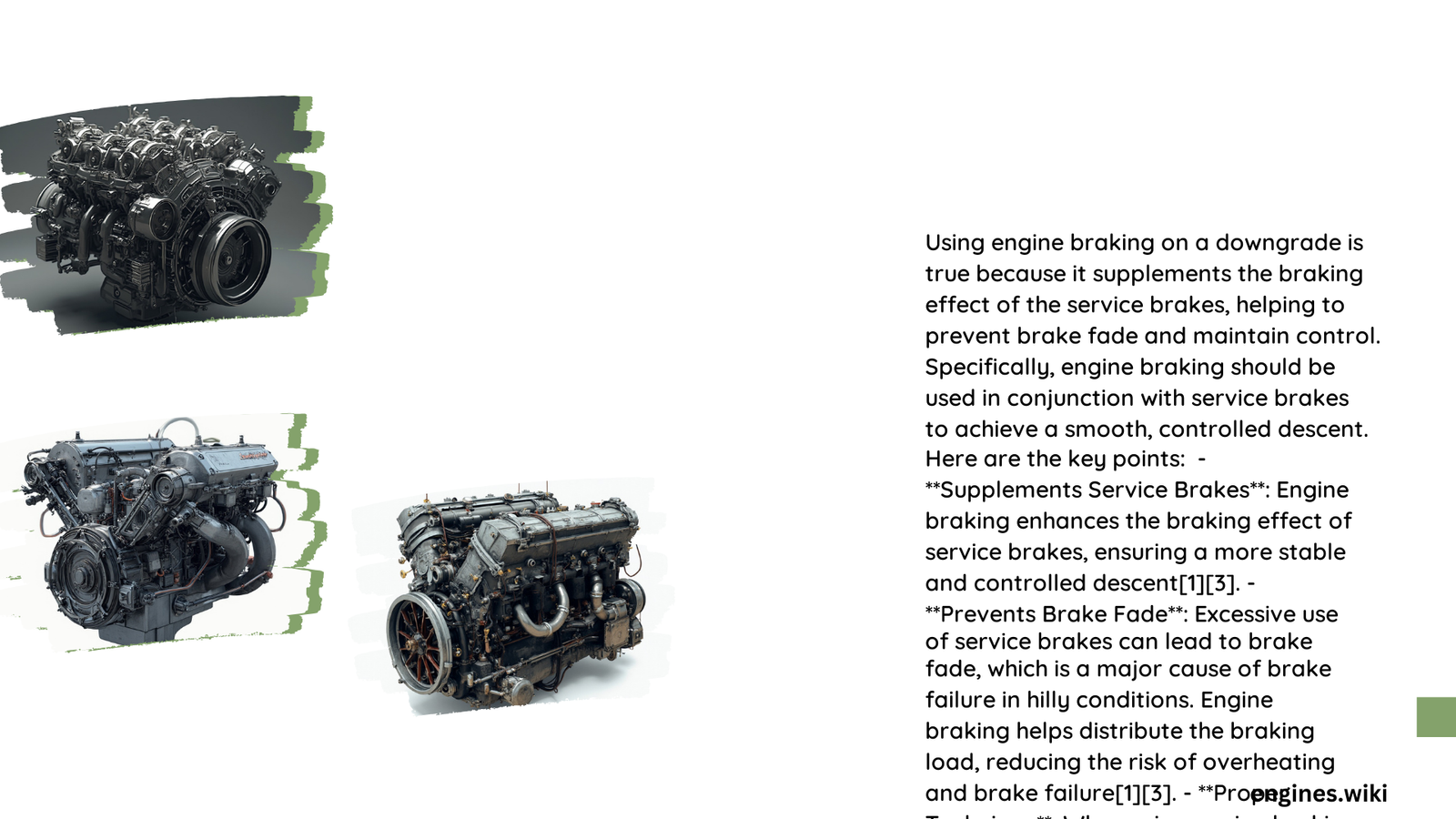Engine braking on downgrades represents a critical driving technique that can significantly impact vehicle safety, brake performance, and overall control. Understanding the precise mechanisms, potential risks, and optimal strategies for implementing engine braking is essential for drivers navigating challenging terrain, particularly when managing heavy vehicles or traversing steep gradients with substantial weight loads.
What Makes Engine Braking Effective on Steep Slopes?
How Do RPM Ranges Impact Braking Performance?
Engine braking effectiveness dramatically depends on specific RPM ranges. Research from Jacobs’ High Power Density (HPD) engine brake demonstrates remarkable performance metrics:
| RPM Range | Braking Power Output |
|---|---|
| 1500 rpm | 28 kW/L |
| 2200 rpm | 37 kW/L |
| 2500 rpm | Up to 611 kW (819 hp) |
Why Does Gear Selection Matter?
Proper gear selection is paramount for maximizing engine braking potential. Key considerations include:
- Preemptive Downshifting: Shift to a lower gear before descending
- Transmission Protection: Prevents potential damage from late gear changes
- Speed Control: Enables more consistent vehicle deceleration
What Role Does Vehicle Weight Play?
Vehicle weight significantly influences engine braking requirements:
- Heavier vehicles demand more robust braking mechanisms
- Cargo load directly impacts braking performance
- Engine braking helps distribute braking load beyond foundation brakes
What Safety Considerations Exist?

Can Engine Braking Prevent Brake Failure?
Engine braking offers critical safety advantages:
- Heat Reduction: Minimizes brake component overheating
- Wear Mitigation: Reduces foundation brake component deterioration
- Traction Management: Provides additional speed control mechanism
How Should Drivers Implement Engine Braking?
Recommended technique involves:
- Select appropriate low gear before descent
- Maintain consistent, controlled speed
- Apply brakes intermittently to signal deceleration
- Avoid sudden, aggressive braking maneuvers
What Performance Metrics Matter?
How Effective Is Engine Braking?
Performance metrics reveal substantial benefits:
- Up to 2000 N·m retarding torque at 1300 rpm
- Potential fuel efficiency improvements
- Reduced brake system stress
What Potential Risks Exist?
Can Engine Braking Cause Vehicle Control Issues?
Potential risks include:
- Reduced traction during aggressive braking
- Potential drivetrain stress
- Unexpected deceleration for following vehicles
Practical Implementation Strategies
What Techniques Maximize Safety?
Recommended driver strategies:
- Anticipate terrain changes
- Practice smooth, controlled deceleration
- Understand vehicle-specific brake characteristics
- Maintain regular brake system maintenance
Conclusion
Engine braking represents a sophisticated technique requiring nuanced understanding, precise execution, and comprehensive vehicle knowledge. Drivers must balance technical understanding with practical application to ensure optimal safety and performance.
Reference:
- [Jacobs Vehicle Systems Research]
- [Vehicle Braking Techniques Manual]
- [Professional Driver Safety Guidelines]
